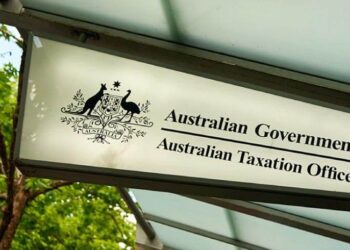The ATO has previously confirmed in March that their “compliance approach for the 2019–20 and 2020–21 financial years is that we will not take action if an SMSF gives a tenant — even one who is also a related party — a temporary rent reduction, waiver or deferral because of the financial effects of COVID-19 during this period”.
The approach applies to both land held by SMSFs and regulation 13.22C unit trusts.
But according to SISFA director Phil Broderick, the ATO website material is “silent as to what relief can be offered and whether it can be offered to all tenants, even those not suffering a downturn”.
As a result, he said this raises questions as to what relief can be offered, and noted that the following should be considered in relation to rent relief granted to related tenants:
- Match the rent relief to that which is offered under the various statutory COVID-19 measures (this approach is best practice).
- SMSF landlords could structure their relief against benchmarking materials (e.g. from estate agents) of what relief is being granted in the rental market by arm’s-length parties for similar properties.
- Determine their own terms for the relief (although this carries the greatest risk of being found to be a non-arm’s length dealing).
“It is also important, if an SMSF landlord offers rent relief, that the relief be formally documented (e.g. through a deed of variation of the lease or an exchange of letters),” Mr Broderick wrote in a blog.
“It is also recommended that the reasons for offering the rent relief be recorded (e.g. in the formal documents or a trustee resolution).”
Potential rent relief issues for trustees
Mr Broderick said potential issues could include breaches of the sole purpose test (section 62 of the Superannuation Industry (Supervision) Act 1993 [SIS Act]), the prohibition against providing financial accommodation (section 65 of the SIS Act), the prohibition against dealing on a non-arm’s length basis (section 109 of the SIS Act) and the in-house asset rules (Part 8 of the SIS Act).
He said rent relief is unlikely to breach the non-arm’s length income rules (NALI) on the basis that the SMSF will not receive more income than it should, noting that for unrelated tenants, offering rent relief is unlikely to breach the superannuation laws as any rent relief will be either negotiated by arm’s-length parties or compelled under various state-based legislative regimes.
However, for related tenants (of business real property), Mr Broderick said the position is not so clear-cut.
“In ‘normal times’, an arm’s-length landlord would be expected to enforce the terms of the lease and any deviation from the lease terms, or altering the terms of the lease in favour of the related tenant, could breach the superannuation laws. In simple terms, this is because such actions would be a non-arm’s length dealing,” Mr Broderick said.
“However, during the COVID-19 crises, there is arguably no ‘normal’ and, therefore, arm’s-length dealings could incorporate discounting rent, deferring rent or both. This is particularly so for tenants who can avail themselves of the statutory rent relief measures.”



These questions have been clearly answered in the ATO’s FAQs & SMSF News.
https://www.ato.gov.au/General/COVID-19/COVID-19-frequently-asked-questions/Self-managed-super-funds-frequently-asked-questions/#Providingrentrelief
https://www.ato.gov.au/Super/Sup/COVID-19-relief-and-compliance-issues/
Great article Phil and I agree with your approach. I do not agree with three comments above as they rely on non-binding ATO comments and what typically happens in these types of situations is that other contraventions also usually follow from ‘stressful’ times. So in 3-5 years time, we need to consider how the ATO will approach SMSFs with multiple contraventions, where the ATO will be focused on raising revenue. Unless SMSF trustees properly cover themselves as recommended by Phil, they remain exposed. If they do properly cover themselves, if there are further contraventions, then these SMSFs will fair far better in view of an ATO that may take a hard line approach.
I agree, another article by a lawyer talking about things “at the margin” trying to worry all when the ATO guidance is very very clear and unambiguous
Agree. This self posturing by auditors and administration firms is a beat up and only adding complexity to an otherwise simple concept. The ATO is showing common sense the rest of the industry just needs to follow
Who cares, ATO won’t take any action so a non event. ATO should just say back to normal in second half of 2021 FY or starting 2022 FY and if everyone does that no issues.